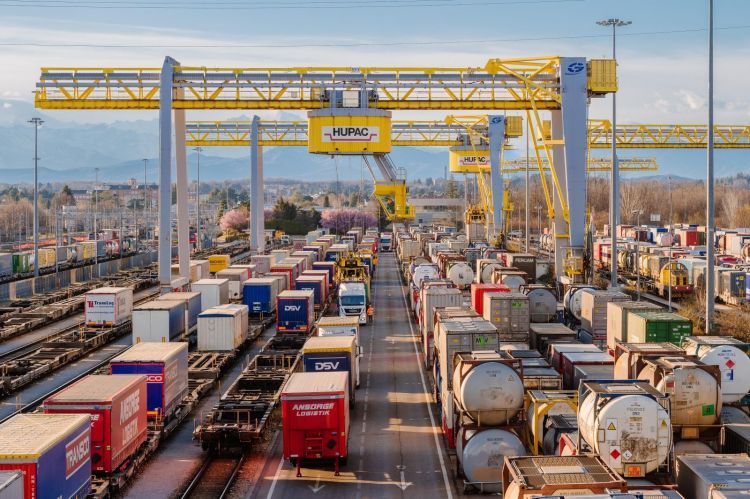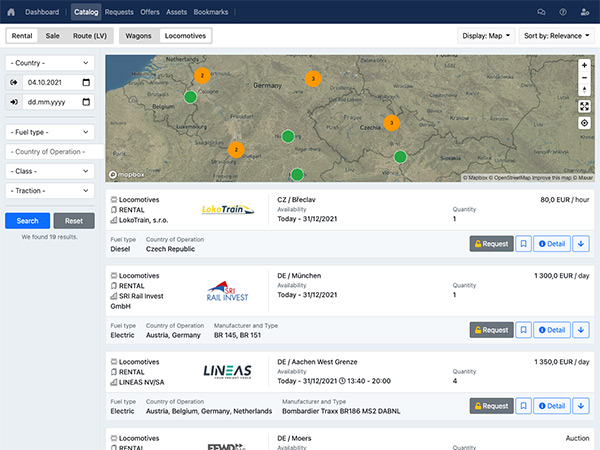They stated that the amendment of the Weights and Dimensions Directive (WDD) should not be considered on its own without seeing the proposal to amend the Combined Transport Directive (CTD). The new CountEmissionEU Regulation is a similarly closely linked part of the GFTP.
According to their statement, the components of the CTD amendment must work in coherence with the objective of strengthening combined transport, which offers the highest energy efficiency combined with the lowest environmental impact for long-distance door-to-door transport. The "operational efficiency measures" proposed in the WDD amendment should focus primarily on road transport over shorter distances, while the position of combined transport should be strengthened for longer distances. Without this logic, the objectives of greening freight transport and promoting intermodal freight transport will not be achieved, they added.
Ralf-Charley Schultze, President of UIRR, pointed out: “Technology neutrality as well as the ultimate greening objective requires that the European co-legislators update our laws so that the most energy efficient and least environmentally burdensome transport solution prevails, instead of enacting measures that increase the 76% market share of road transportation, half of which is long-distance transport today. Door-to-door Combined Transport effectively delivers all of our European transport-, energy-, climate-, environmental- and social policy objectives.”
The reverse modal shift consequence of introducing heavier and longer vehicle combinations in the proposal as European Modular System (EMS) or Gigaliners has been demonstrated in several studies, which have so far been used as a basis for rejecting the cross-border circulation of Gigaliners. The free circulation of Gigaliners carrying average density (palletised) goods would only serve to increase the 76% market share of road transport. Only combined transport can reduce the number of lorries on the roads, not gigaliners. Average-density freight is the freight segment from which a modal shift on long distances would be indispensable to achieve the desired greening of freight transport, says the communication.
Alberto Mazzola, Executive Director of CER stated: “Electric rail infrastructure enables the direct transformation of non-fossil energy sources into freight transportation performance. Rail is also safer, contrary to HDVs which still cause numerous fatalities and injuries. According to the European Transport Safety Council (ETSC), fatalities provoked by collisions with heavy duty vehicles are declining much less than those involving light vehicles.”
Representatives of these three associations go on to say that the measures to promote intermodal transport mentioned in the WDD amendment are either irrelevant or ineffective. There is little interest in transporting intermodal consignments, which would require road vehicles with additional gross weight for the road legs of combined transport. Road and motorway managers are already unhappy with 44-tonne lorries because of the accelerated wear and tear on road infrastructure, particularly bridges.
Conor Feighan, Secretary General of ERFA stressed: “If the European Union is serious about reducing freight transport emissions in the short-term, it is essential that a framework is developed which facilities modal shift. It is difficult to see how this can be achieved by progressing with the Weights and Dimensions Directive in isolation from other strategic files such as the Combined Transport Directive.”
The introduction of longer and heavier vehicles, or gigaliners, would only lead to an improvement in intermodal freight transport if the three legislative proposals, designed and presented by the European Commission as a single package, are considered as a single package by the European co-legislators. CER, ERFA and UIRR call on the European Commission to present its proposal for the revision of the CTD as soon as possible and ask the European Parliament and the European Council not to proceed with the revision of the WDD until then, they concluded.

